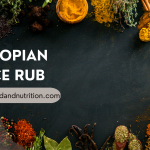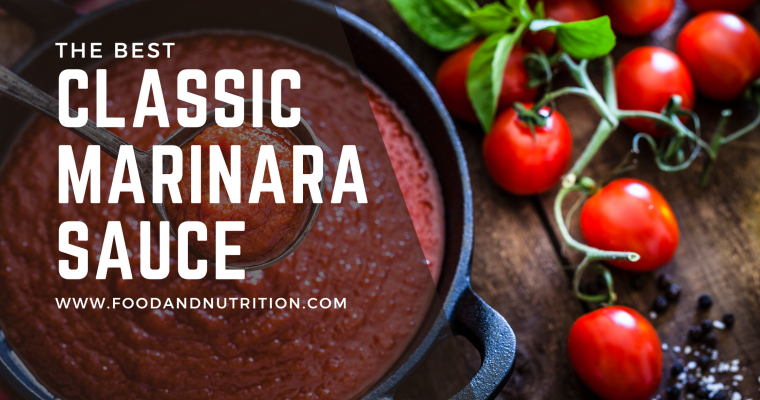As a registered dietitian, I have prepared a comprehensive and informative chart featuring various herbs and spices, along with their respective categories, characteristics, potential health benefits, and example uses. This chart aims to assist you in making healthier and more flavorful choices when incorporating herbs and spices into your culinary endeavors.
HOW TO USE THE HERB AND SPICE CHART
- Explore Categories: The chart categorizes herbs and spices into different groups, including “Spices,” “Herbs,” “Flavoring Mix,” and “Spice Blend.” Start by identifying which category you are interested in.
- Understand Characteristics: Each herb and spice comes with unique characteristics, such as flavors, aromas, and appearances. Take note of these features to ensure they complement your dishes appropriately.
- Discover Potential Health Benefits: As a registered dietitian, I have included potential health benefits associated with each herb and spice. These can range from antioxidant properties to digestive support and more.
- Find Suitable Uses: The chart suggests various culinary applications for each herb and spice. Use this information to enhance the flavors and nutritional value of your dishes.
- Substitutions: If you encounter difficulties finding a particular herb or spice, the chart might offer suitable substitutes to maintain the intended flavor profile.
- Storage and Shelf Life: While not explicitly listed in the chart, remember that proper storage and knowledge of the shelf life are essential for preserving the quality and potency of herbs and spices.
- Be Mindful of Allergens: If you have food allergies or sensitivities, it’s essential to cross-reference the chart to ensure safe consumption.
- Cultural Cuisine Recommendations: Some herbs and spices are particularly prevalent in certain cuisines. Explore these cultural recommendations to expand your culinary repertoire.
By utilizing this herb and spice chart, you can make informed choices in selecting herbs and spices that not only add delightful flavors to your meals but also provide potential health benefits. Always remember to consult with a healthcare professional or registered dietitian if you have specific dietary concerns or health conditions. Now, let’s dive into the world of herbs and spices to elevate your cooking experience!
Spice Up Your Cooking: Popular Herbs and Spices Blends
- Master Cooking with Salt: A Guide to Types & Uses – Elevate MealsWhen incorporating the diverse world of salts into everyday cooking, understanding the unique characteristics, health benefits, and culinary applications of each type can transform your meals from good to gourmet. This table, curated in collaboration with a registered dietitian, serves as a comprehensive guide to "read more"
- Spice Up Your Culinary Delights: Discover the Top 20 Popular Herbs and SpicesAs a registered dietitian, I understand the importance of herbs and spices in enhancing the flavor of dishes while providing potential health benefits. Herbs and spices are not only aromatic and flavorful but also rich in phytochemicals, antioxidants, and other bioactive compounds that support overall "read more"
- Master the Art of Barbecue: Dry Seasoning Rub and Mop Sauce Recipe UnveiledThere is something magical about the smoky aroma and mouthwatering flavors that waft through the air at a barbecue. It is a culinary experience that brings people together, and at the heart of every great barbecue is a well-seasoned and perfectly cooked piece of meat. "read more"
- Master the Grill: Create Your Signature Flavors with Homemade Meat & Poultry SeasoningWhen it comes to grilling or boiling meat and poultry, the right blend of seasonings can make all the difference. While store-bought seasonings are readily available, there’s something truly special about creating your own. In this blog post, we’ll delve into the world of homemade "read more"
Author: N. Jay Sorensen, RDN
COMPREHENSIVE GUIDE TO HERBS AND SPICES: FLAVORFUL ENHANCEMENTS FOR A HEALTHY KITCHEN
| Name | Type | Characteristics | Potential Health Benefits | Example of Use |
|---|---|---|---|---|
| Allspice | Spice: whole or ground. | Small brown berry, flavor resembles a combination cinnamon, clove, and nutmeg. Native to West India. | Antioxidant properties, aids digestion. | Sausages, braised meats, poached fish, cooked fruits, puddings, pies, and relishes. |
| Achiote (Annatto) | Spice: Whole, ground or paste. | It is the yellow coloring in margarine but commonly used in Latin American foods, Caribbean, and Filipino cuisines. | Rich in carotenoids. | Used to color soups, stews, sauces, marinades, and spice rubs. |
| Anise | Spice: whole or ground. Herb: leaf, fresh or dried. | Licorice flavor. Native to Spain, China, and Syria. | Supports digestive health. | Cookies, pastries, and bread. |
| Basil | Herb: leaf, fresh or dried. | Aromatic green leaf. Member of mint family. | Contains essential nutrients. | Tomato dishes, pesto, egg dished, salads, marinades, fish, and compound butters. |
| Bay Leaf | Herb: whole leaf. | Stiff dark green, oblong leaf with a pungent aroma reminiscent of sassafras. Comes from the Laurel tree. | Anti-inflammatory properties, aids in respiratory health. | Stocks, sauces, soup, stews, and braised meats. |
| Bouquet Garni | Flavoring mix. | A personal selection of herbs, vegetables and occasionally spices, often tied with a string. | Adds depth to stocks, soups, and sauces. | Stocks, soups, and sauces. |
| Caraway | Spice: whole seed. | Dark brown curved seed. Grown in Northern Europe. | Supports digestive health. | Rye bread, cabbage, sauerkraut, and Eastern European Cuisine. |
| Cardamom | Spice: whole pod or ground seed. | Tiny brown seeds, white or green pods. Sweet, aromatic, and expensive. Native of India and Guatemala. | May help with digestion, antioxidant properties. | Pickling, Danish pastries, and curries. |
| Cayenne | Spice: ground, seed. | Very powerful, ground hot red pepper. Native of French Guiana. | Boosts metabolism, pain relief. | Soups, sauces, fish, and eggs. |
| Celery Seed | Spice: whole seed or ground. | Tiny brown seed with strong celery flavor. Too much can create a “hot” spice effect. | Supports bone health. | Salads, dressings, pickling, tomato dishes, and marinades. |
| Chervil | Herb: leaf, fresh or dried. | Small, delicate, green leaf. Mild flavor of parsley and tarragon. | Aids digestion, rich in vitamins and minerals. | Soups, salads, sauces, egg, dishes, chicken, fish, and dressing. |
| Chili Powder | Spice: ground, blend. | Blend of ground cumin, chili pepper, oregano, allspice. Can be mild or hot. | May boost metabolism, antioxidant properties. | Chili, stews, sauces, and ground meats. |
| Chives | Herb: fresh, dried, frozen. | Fine, hollow, green top of a very small onion. | May help lower blood pressure. | Salads, egg and cheese dishes, fish soups, and sauces. |
| Cilantro | Herb: leaf, dried or fresh. | Light green aromatic leaf. Shaped like flat parsley but much more pungent flavor. Leaf from coriander seed. | May support heart health. | Salads, salsa, sauces, soup, eggs, and dressings. |
| Cinnamon | Spice: stick or ground. | Reddish brown aromatic bark from cinnamon or cassia tree. Native of East India. | May help regulate blood sugar levels, antioxidant properties. | Preserves, stewed fruits, breads, pastries, desserts, ham, and hot beverages. |
| Clove | Spice: whole or ground. | Dried flower bud of tropical clove tree. Pungent, sweet in flavor. Native of Indonesia. | Rich in antioxidants, may have antimicrobial effects. | Whole: Marinades, stocks, sauces, braised meats, hams, and pickling. Ground: pastries, fruits and cakes. |
| Coriander | Spice: whole or ground. | Round light-brown seed of cilantro leaf with a slightly aromatic flavor. Native to Argentina and Morocco. | Aids digestion, may help with blood sugar control. | Pickling, sausages, stocks, pork, curry, gingerbread, salsa, and dressings. |
| Cumin | Spice: whole or ground seed. | Small seed resembling caraway, but lighter in color. Grown in Mexico and Syria. | Supports digestion, may have anti-inflammatory properties. | Chili and curry powder blends, sausages, salsa, egg & cheese, curry dishes, vegetables, soups, sauces, fish, meat, and rice. |
| Curry | Spice: ground, powder or paste. | Mixture of up to 20 spices including turmeric, cumin, coriander, ginger, clove, and cinnamon. Peppery, yellow in color. Can vary from mild to very hot. | May have anti-inflammatory and antioxidant effects. | Curry dishes, vegetables, soups, sauces, fish, meat, and rice. |
| Name | Type | Characteristics | Potential Health Benefits | Example of Use |
|---|---|---|---|---|
| Dill | Herb: Leaves, fresh or dried. Spice: Whole seed. | Herbs and seed with “dill pickle” flavor. Seed more pungent than herb. | Aids digestion, may have antimicrobial properties. | Seed: pickling, soups, sauerkraut, marinade. Herb: salads, soups, fish & shellfish, vegetables, sauces, and vinegar. |
| Fennel | Spice: whole seed. | Greenish brown seed, similar in flavor to anise. Grown in South America, Asia, and Africa. | Aids digestion, may help reduce inflammation. | Sausages, tomato sauces, marinades, fish, and pickling. |
| Fine Herbs | Herb blend. | Generally a bouquet blend of three or more finely chopped herbs possibly including chives, tarragon, parsley, basil, savory, etc. Used to enhance various dishes. | Nutrient-rich, may have antioxidant properties. | Herb sauce, compound butters, broiled meats, fish, and cold sauces. |
| Garlic | Fresh, whole bulb. Dried bulb: Granulated, powdered, or mixed with salt. | Strong aromatic member of onion family. | May support immune health. | Widely used. |
| Ginger | Spice: fresh whole, dried powder, candied crystallized, or pickled. | Light brown knobby root from tropical plant. | May help with nausea and digestion. | Baked goods, desserts, fruits, curry dishes, pickling, and chutney. Chinese, Caribbean, and Japanese cuisine. |
| Juniper Berry | Spice: whole. | Slightly soft, purple berry. “Piney” flavor. Principle flavor of gin. | May have anti-inflammatory properties, supports urinary tract health. | Marinades, game dishes, and sauerkraut. |
| Mace | Spice: whole “blade” or ground. | Made from orange red outer covering of nutmeg. Aromatic, similar to nutmeg in flavor but milder. | Contains antioxidants, may support digestive health. | Baked goods, desserts, fruit, sausages, fish, vegetables, and preserves. |
| Marjoram | Herb: dried leaf. | Gray green herb from mint family. Similar to oregano but milder. | Rich in antioxidants. | Beef, veal, lamb, sausage, pates, poultry, stews, soups, vegetables, salads, and sauces. |
| Mint | Herb: leaf, fresh or dried. | Aromatic herb with cool flavor. Spearmint and peppermint are most common. | Aids digestion, may have antimicrobial properties. | Lamb, fruits, tea, fruit beverages, peas, carrots, potatoes, jellies, soups, and sauces. |
| Mirepoix | Flavoring mix. | Mixture of aromatic vegetables including onion, celery, carrot, leek, and garlic. | Rich in vitamins and minerals. | Stocks, sauces, soups, and roasts. |
| Mustard Seed | Spice: whole and ground seed. | Very pungent white, yellow or brown seed. | Supports digestion, may have anti-inflammatory effects. | Prepared mustard, pickling, sauces, and salsa. |
| Nasturtium | Leaf and seed. | Plant with yellow, orange, and red flowers and sharp casting leaves and seeds with pungent odor. | Rich in vitamin C, may have antimicrobial properties. | Salads, pickling, and mustard. |
| Nutmeg | Spice: whole or ground. | Sweet, aromatic kernels of nutmeg fruit. Grown in Netherlands, East and West Indies. | Contains antioxidants, may aid digestion. | Baked goods, pies, cream sauces, soups, chicken, veal, vegetables, desserts, and breads. |
| Oregano | Herb: leaf or ground, fresh or dried. | Pungent herb, similar to marjoram, but stronger. Native to Italy and Mexico. Also grown domestically. | Contains antioxidants, may have antimicrobial effects. | Italian & Mexican dishes, tomato sauces, soups, sauces, stews, meats, salads, and marinades. |
| Paprika | Spice: ground. | Ground from dried sweet, red pepper. | Contains vitamin C, may have anti-inflammatory effects. | Fish, seafood, meats, salads, sauces, dressings, and garnish. |
| Parsley | Herb: fresh leaf in bunches, dried chopped leaf. | Green leaf, curly or flat, with delicate sweet flavor. Excellent source of vitamin C. | Rich in vitamins A, C, K, and iron, | Garnish, fried, stews, sauces, salads, vegetables, and potatoes. |
| Pepper: black, white, or green | Spice: whole, cracked, medium or fine ground. Black: pungent, aromatic. White: What is left when black outer casing is removed, milder, adds sharp tang to all foods. Green: Packed in mild brine. | Small hard berry. | May have antioxidant properties, supports digestion. | Widely used |
| Poppy Seeds | Spice: whole. | Tiny blue black seeds with crunchy nut like flavor. It is a product of the opium poppy, but does not contain opium. | Contains essential nutrients, supports heart health. | Breads, rolls, pastry, fillings, cookies, cakes, salsa, and dressings. |
| Rosemary | Herb: whole leaf, fresh or dried. | Very aromatic light green leaf resembling pine needles. Healthy and strong, even in cold weather. | Contains antioxidants, may support cognitive health. | Lamb, fish, beef, sauces, soups, stews, salads, and marinades. |
| Sachet Bag | Spice mix. | Various spices tied in a small cheesecloth sack. | Braised meats, game, stews, pickling, soups, and sauces. | |
| Saffron | Whole “threads.” | Only the stigmas from the saffron crocus are used. Very expensive. Gives bright yellow color to foods with a mild distinctive flavor. | Contains antioxidants, may have mood-enhancing properties. | Baked goods, rice, potatoes, soups, sauces, curry, and meats. |
| Sage | Herb: whole, rubbed, or ground leaf, fresh or dried. | Pungent gray green herb with fuzzy oblong leaves. | May support cognitive health, antimicrobial effects. | Stuffing, meat, poultry, soups, stews, salads, and fish. |
| Savory | Herb: fresh or dried leaf. | Fragrant herb of mint family. Summer crop preferred to Winter crop. | Contains essential nutrients. | Salads, eggs, vegetables, stuffing, soups, meats, fish, and sauces. |
| Sesame | Herb: whole (hulled or unhealed) seeds. | Small yellowish seed with high oil content and nutty taste. Imported from Asia, East and Central America. | Rich in healthy fats, supports heart health, | Bread & roll garnish, salads, and oriental candy. |
| Tarragon | Herb: fresh, dried, pickled leaf. | Delicate green herb with small oblong leaves. Flavor is similar to mint and licorice. | Contains essential nutrients. | Béarnaise sauce, vinegar, chicken, fish, salads, dressings, and eggs. |
| Thyme | Herb: fresh or dried leaf, crushed or ground. | Tiny brownish green leaf, very aromatic. | Rich in antioxidants, antimicrobial properties. | Soups, chowders, stocks, sauces, meats, poultry, and salad dressing. |
| Turmeric | Spice: ground. | Intense yellow root of ginger family. Mild but peppery flavor. | Contains curcumin with anti-inflammatory effects. | Curry powder, pickles, relish, salads, eggs, rice, and chow-chow. |

- Unlock Classic Marinara Sauce: A Flavorful & Nutritious Guide
- Embracing Summer: The Ultimate Watermelon Feta Salad with Tomatoes & Olives
- Rediscovering Lebanese Salad: A Refreshing Delight with a Rich Heritage
- Eating Your Way to Healthy Blood Pressure: A Guide to Lowering Hypertension
- Perfect Roasted Leg of Lamb: A Timeless Delight for Your Table
- Romesco Sauce: A Flavorful Spanish Delight That Elevates Every Dish







